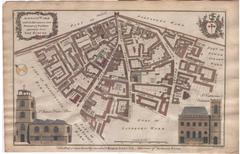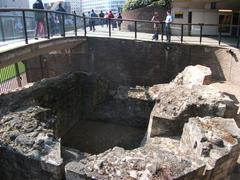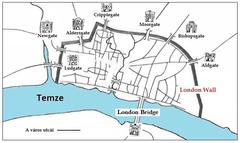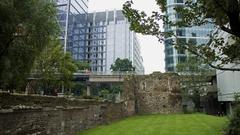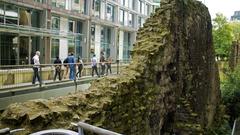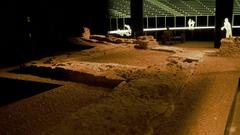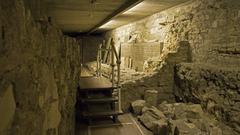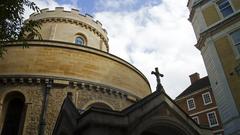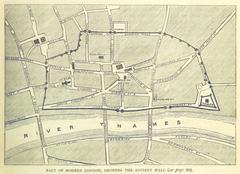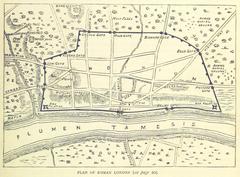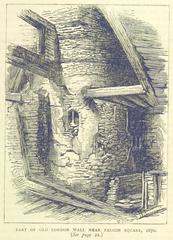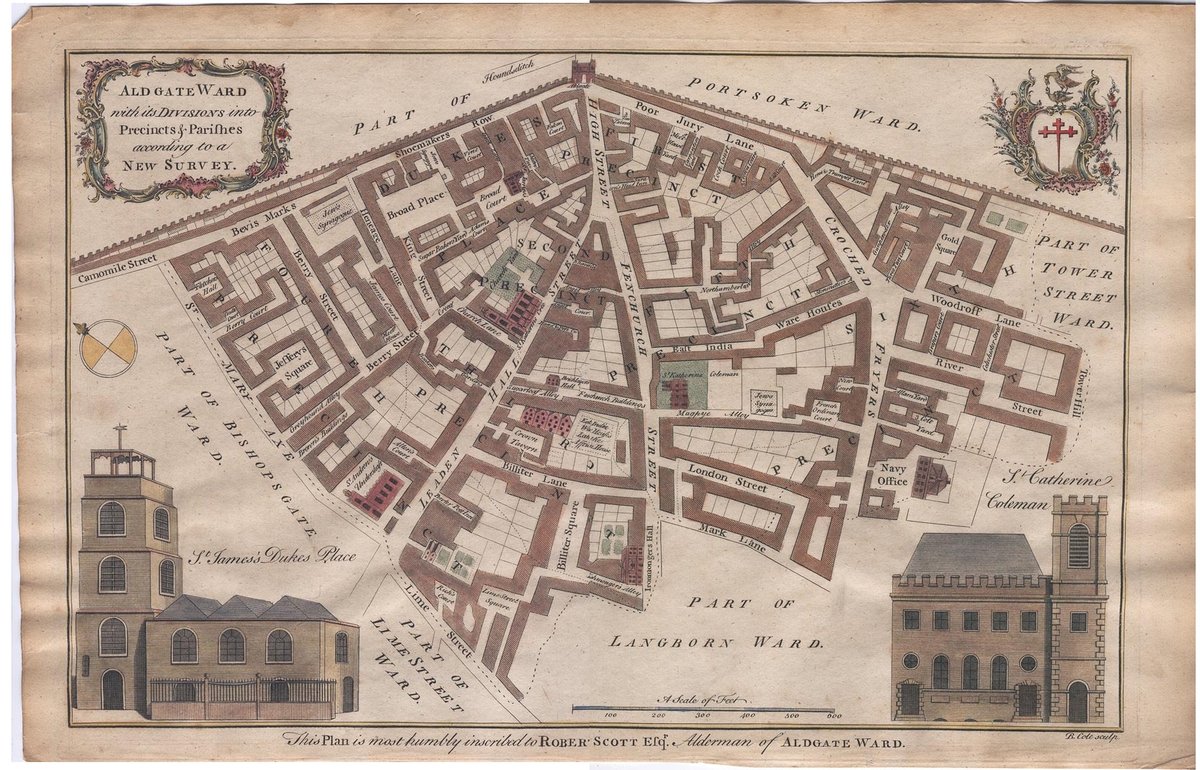
Trajan in London: Visiting Hours, Tickets, and Historical Insights
Published on: 19/07/2024
Discover the rich history and visitor information about Trajan in London.
Welcome to Trajan, an area that stands as a testament to the rich tapestry of history embedded in the heart of London, United Kingdom. Named after the illustrious Roman Emperor Trajan, who ruled from 98 to 117 AD, this district offers a unique blend of ancient history and modern vibrancy. Trajan’s historical significance is deeply rooted in its Roman origins, where it was once a bustling part of Londinium, the Roman name for London. The area’s strategic location along the River Thames facilitated trade and transportation, making it a vital commercial hub (Historic UK).
Following the Roman era, Trajan continued to evolve through the medieval period and beyond. The construction of the Tower of London in 1066 by William the Conqueror marked a significant milestone, symbolizing Norman authority and serving multiple roles as a royal palace, fortress, and prison (English Heritage). The Renaissance and the Industrial Revolution further shaped the district, introducing grand structures and modern infrastructure that facilitated London’s growth into a global metropolis (Museum of London).
Today, Trajan is not only a historical landmark but also a vibrant cultural and economic hub. The area hosts several iconic attractions, including the Tower of London, St. Paul’s Cathedral, and modern architectural marvels like the Shard. It is well-connected by public transport, making it easily accessible for both locals and tourists. Whether you’re a history enthusiast, a culture aficionado, or simply looking for a scenic spot to explore, Trajan has something for everyone.
Contents
- Introduction
- Roman Origins
- Medieval Developments
- The Renaissance and Early Modern Period
- Industrial Revolution
- 20th Century and Modern Era
- Archaeological Discoveries
- Cultural Significance
- Visiting Hours and Tickets
- Travel Tips and Nearby Attractions
- Special Events and Guided Tours
- Photographic Spots
- Preservation and Conservation
- Visitor Experience
- FAQ
- Conclusion and Call to Action
Exploring Trajan, London - History, Visiting Hours, and Tickets
Introduction
Welcome to Trajan, a historical gem in the heart of London, United Kingdom. Named after the Roman Emperor Trajan, this area boasts a rich history that spans from the Roman era to the modern day. In this article, we’ll delve into Trajan’s fascinating past, provide essential visitor information including visiting hours and ticket prices, and highlight key attractions and tips to make the most of your visit.
Roman Origins
Trajan, a historical area in London, derives its name from the Roman Emperor Trajan, who ruled from 98 to 117 AD. The Romans established Londinium (modern-day London) around 43 AD, and it quickly became a significant commercial center. The area now known as Trajan was part of this bustling Roman city, strategically located along the River Thames, which facilitated trade and transportation. Archaeological excavations have uncovered remnants of Roman roads, buildings, and artifacts, indicating the area’s importance during this period (Historic UK).
Medieval Developments
Following the decline of the Roman Empire, Londinium fell into disrepair, but the area that would become Trajan saw renewed activity during the medieval period. By the 11th century, London had re-emerged as a vital economic and political hub. The construction of the Tower of London in 1066 by William the Conqueror marked a significant development in the city’s history. The Tower, located near Trajan, served as a royal palace, fortress, and prison, symbolizing Norman authority over the city (English Heritage).
The Renaissance and Early Modern Period
The Renaissance brought significant changes to London, including the area around Trajan. The 16th and 17th centuries saw the expansion of trade and the rise of the British Empire. The construction of grand buildings and the establishment of institutions like the Royal Exchange in 1565 underscored London’s growing importance. The Great Fire of London in 1666 devastated much of the city, but the subsequent rebuilding efforts led to the creation of new architectural landmarks and urban planning initiatives that shaped the modern city (Museum of London).
Industrial Revolution
The Industrial Revolution of the 18th and 19th centuries transformed London into a global metropolis. The area around Trajan saw significant industrial and infrastructural developments, including the construction of railways, bridges, and factories. The expansion of the London Docklands facilitated international trade, while the growth of the city’s population led to the development of new residential and commercial areas. The Victorian era also saw the establishment of cultural institutions such as the British Museum and the National Gallery, enhancing London’s status as a cultural capital (British Museum).
20th Century and Modern Era
The 20th century brought both challenges and opportunities to the Trajan area. The two World Wars had a profound impact on London, with significant bomb damage during the Blitz of World War II. Post-war reconstruction efforts led to the development of modern infrastructure and the revitalization of historic areas. The latter half of the century saw the rise of the financial services industry, with the City of London becoming one of the world’s leading financial centers. The construction of iconic buildings such as the Gherkin and the Shard in the 21st century reflects the area’s ongoing evolution and significance (City of London).
Archaeological Discoveries
Archaeological excavations in the Trajan area have provided valuable insights into its rich history. Discoveries include Roman artifacts such as pottery, coins, and mosaics, as well as medieval and post-medieval remains. These findings have helped historians and archaeologists piece together the area’s historical narrative and understand its development over the centuries. Notable excavations include the discovery of a Roman amphitheater beneath the Guildhall and the remains of a medieval priory (Museum of London Archaeology).
Cultural Significance
The Trajan area holds significant cultural importance due to its historical legacy and contributions to London’s development. It is home to several historic landmarks, including the Tower of London, St. Paul’s Cathedral, and the Monument to the Great Fire of London. These sites attract millions of visitors each year, offering a glimpse into the city’s rich history and architectural heritage. The area’s cultural significance is further enhanced by its role in London’s financial and commercial activities, making it a vibrant and dynamic part of the city (Visit London).
Visiting Hours and Tickets
Planning a visit to the Trajan area? Here are some essential details:
- Visiting Hours: Most attractions in the Trajan area, including the Tower of London and St. Paul’s Cathedral, are open daily from 9:00 AM to 5:00 PM. However, it’s advisable to check the official websites for the most up-to-date information.
- Tickets: Ticket prices vary depending on the attraction. For example, entry to the Tower of London costs £25 for adults and £12.50 for children. Discounts are often available for online bookings, families, and groups.
Travel Tips and Nearby Attractions
- Travel Tips: The Trajan area is well-connected by public transport, including the London Underground, buses, and river services. Consider purchasing an Oyster Card or a Travelcard for convenience and savings on fares.
- Nearby Attractions: In addition to the main historical sites, visitors can explore nearby attractions such as the Museum of London, the Shard, and the vibrant Borough Market. These spots offer a mix of history, culture, and culinary delights.
- Accessibility: Many of the Trajan area’s attractions are accessible to visitors with disabilities. It’s best to check specific accessibility information on the official websites of each site.
Special Events and Guided Tours
The Trajan area hosts a variety of special events throughout the year, including historical reenactments, seasonal festivals, and art exhibitions. Guided tours are also available, providing in-depth insights into the area’s history and significance. Be sure to book in advance to secure your spot.
Photographic Spots
Capture the essence of Trajan with these top photographic spots:
- Tower of London: Iconic views of the historic fortress.
- St. Paul’s Cathedral: Stunning architectural shots, both interior and exterior.
- The Shard: Panoramic views of London from the observation deck.
Preservation and Conservation
Efforts to preserve and conserve the historical and architectural heritage of the Trajan area are ongoing. Organizations such as Historic England and the City of London Corporation work to protect and maintain historic buildings and sites, ensuring their continued relevance and accessibility for future generations. Conservation initiatives include the restoration of historic structures, the promotion of heritage tourism, and the integration of modern developments with the area’s historical character (Historic England).
Visitor Experience
Visitors to the Trajan area can explore a wealth of historical and cultural attractions. Guided tours, interactive exhibits, and educational programs offer immersive experiences that bring the area’s history to life. Key attractions include the Tower of London, where visitors can learn about its history as a royal palace and prison, and St. Paul’s Cathedral, renowned for its stunning architecture and historical significance. The area also offers a variety of dining, shopping, and entertainment options, making it a vibrant destination for tourists and locals alike (London Pass).
FAQ
What are the visiting hours for Trajan? Most attractions in the Trajan area, including the Tower of London and St. Paul’s Cathedral, are open daily from 9:00 AM to 5:00 PM. Always check the official websites for the latest information.
How much are tickets for Trajan? Ticket prices vary by attraction. For instance, entry to the Tower of London costs £25 for adults and £12.50 for children. Discounts are available for online bookings, families, and groups.
Conclusion and Call to Action
In summary, the history of Trajan, London, is a testament to the city’s enduring significance and dynamic evolution. From its Roman origins to its modern-day status as a global financial center, the area has played a crucial role in shaping London’s identity and heritage. Visitors to Trajan can explore a rich tapestry of historical and cultural landmarks, offering a unique and memorable experience.
Download the Audiala mobile app to enhance your visit with audio guides and interactive maps. Check out related posts on our website for more travel tips and historical insights. Follow us on social media for the latest updates and special offers. Happy exploring!
